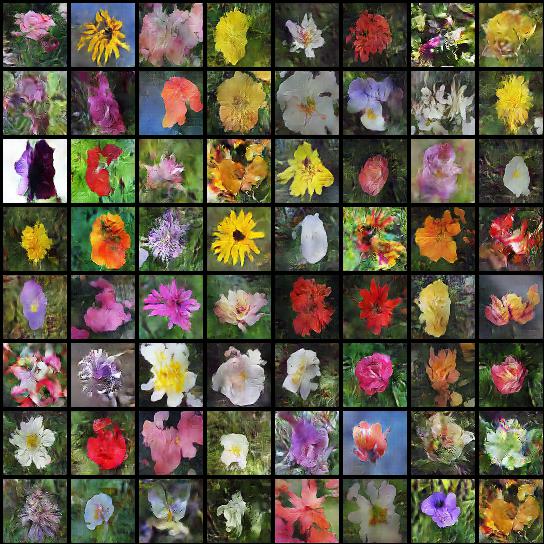This is a pytorch implementation of Generative Adversarial Text-to-Image Synthesis paper, we train a conditional generative adversarial network, conditioned on text descriptions, to generate images that correspond to the description. The network architecture is shown below (Image from [1]). This architecture is based on DCGAN.
Image credits [1]- pytorch
- visdom
- h5py
- PIL
- numpy
This implementation currently only support running with GPUs.
This implementation follows the Generative Adversarial Text-to-Image Synthesis paper [1], however it works more on training stablization and preventing mode collapses by implementing:
- Feature matching [2]
- One sided label smoothing [2]
- minibatch discrimination [2] (implemented but not used)
- WGAN [3]
- WGAN-GP [4] (implemented but not used)
We used Caltech-UCSD Birds 200 and Flowers datasets, we converted each dataset (images, text embeddings) to hd5 format.
We used the text embeddings provided by the paper authors
To use this code you can either:
- Use the converted hd5 datasets, birds, flowers
- Convert the data youself
- download the dataset as described here
- Add the paths to the dataset to
config.yamlfile. - Use convert_cub_to_hd5_script or convert_flowers_to_hd5_script script to convert the dataset.
Hd5 file taxonomy `
- split (train | valid | test )
- example_name
- 'name'
- 'img'
- 'embeddings'
- 'class'
- 'txt'
- example_name
`python runtime.py
Arguments:
type: GAN archiecture to use(gan | wgan | vanilla_gan | vanilla_wgan). default =gan. Vanilla mean not conditionaldataset: Dataset to use(birds | flowers). default =flowerssplit: An integer indicating which split to use(0 : train | 1: valid | 2: test). default =0lr: The learning rate. default =0.0002diter: Only for WGAN, number of iteration for discriminator for each iteration of the generator. default =5vis_screen: The visdom env name for visualization. default =gansave_path: Path for saving the models.l1_coef: L1 loss coefficient in the generator loss fucntion for gan and vanilla_gan. default=50l2_coef: Feature matching coefficient in the generator loss fucntion for gan and vanilla_gan. default=100pre_trained_disc: Discriminator pre-tranined model path used for intializing training.pre_trained_genGenerator pre-tranined model path used for intializing training.batch_size: Batch size. default=64num_workers: Number of dataloader workers used for fetching data. default =8epochs: Number of training epochs. default=200cls: Boolean flag to whether train with cls algorithms or not. default=False
[1] Generative Adversarial Text-to-Image Synthesis https://arxiv.org/abs/1605.05396
[2] Improved Techniques for Training GANs https://arxiv.org/abs/1606.03498
[3] Wasserstein GAN https://arxiv.org/abs/1701.07875
[4] Improved Training of Wasserstein GANs https://arxiv.org/pdf/1704.00028.pdf
- https://github.com/reedscot/icml2016 (the authors version)
- https://github.com/paarthneekhara/text-to-image (tensorflow)






